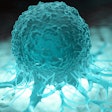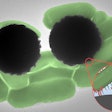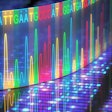
While standard viral tests involving polymerase chain reaction (PCR) are the primary way to diagnose an active COVID-19 infection, researchers are naturally pursuing alternatives that may provide other advantages.
Currently, there is a focus on developing antibody tests, for instance, which could also determine whether a patient had previously been infected, helping epidemiologists better understand the spread of the disease in a population. However, other researchers are thinking far outside the typical box of life science tools; some have turned to terahertz spectroscopy as a potential boon to COVID-19 detection.
Terahertz spectroscopy focuses on a particular window of frequencies in the electromagnetic spectrum near 1 THz (1 trillion Hertz), corresponding to wavelengths of a millimeter or shorter. This particular window, falling between microwave radiation and the far infrared, has been a challenging one to probe technically, and reliable sources and detectors have been difficult to develop, and commercial spectrometers are much newer to the market than other forms of spectroscopy. Terahertz radiation can penetrate many materials for some distance, enabling imaging applications in materials science, security screening, and medical imaging.
The research teams of Moumita Mukherjee, Adamas University and Dinesh Bhatia, North Eastern Hill University (NEHU) have indicated that terahertz imaging could be a tremendous benefit to countries such as India, where current methods of thermal imaging to passively scan areas like airports or rail stations fail to uncover asymptomatic carriers of the virus.
Terahertz imaging, unlike x-rays, is harmless to the subject, so broad screening of populations would offer no health disadvantages. The terahertz radiation would be used to image the upper respiratory pathway of subjects, and the difference between healthy and infected cells is determined by the water content, indicative of edema. Further testing would be required to confirm the presence and identity of the virus, but as an effective screening tool, it could be invaluable. The researchers are pursuing government approval.
An Israeli research team has focused on ex vivo testing using terahertz spectroscopy. Professor Gabby Sarusi of Ben-Gurion University of the Negev has developed a breath test that provides results in less than a minute. A patient's breath sample is deposited onto a chip. When analyzed, the specific terahertz resonance of the virus particle can be directly detected. Costs per test could be in the tens of dollars, and the rapid results would be of tremendous utility. Clinical trials are being conducted in concert with the Israeli Defense Ministry.
The total market for laboratory terahertz spectroscopy was about $50 million in 2019. While the technique has found some niche uses in research, it has yet to find its "killer app" -- it's possible that it may find one in detecting a killer, according to research by Strategic Directions International.
Michael Tice is a senior analyst with Strategic Directions International (SDi).
Disclosure: LabPulse.com is a sister company of SDi.














